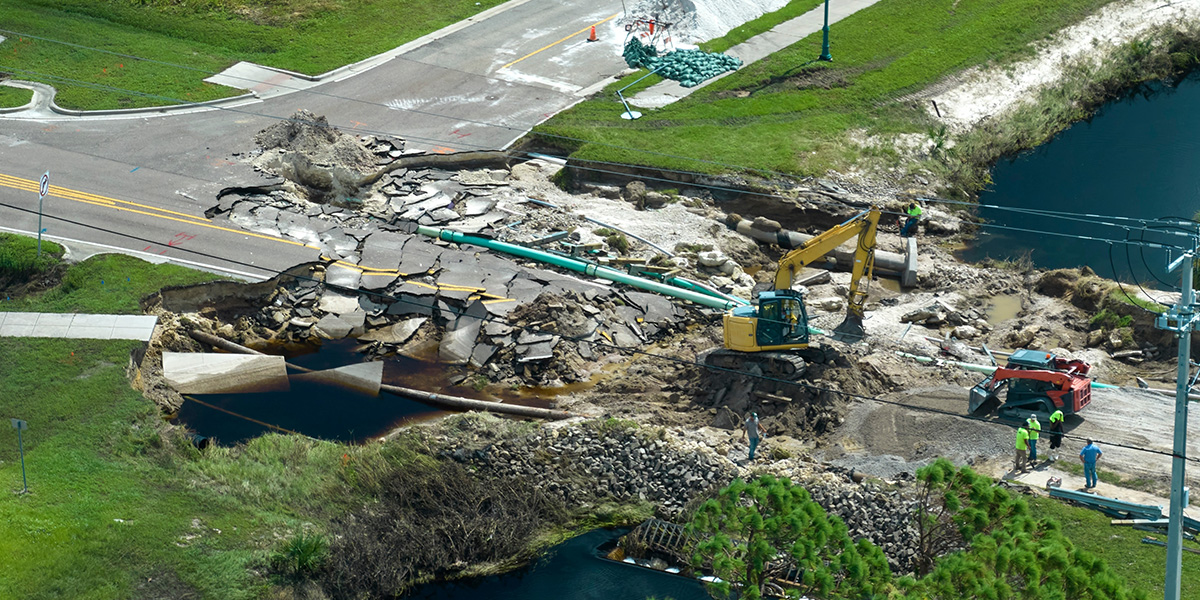Floods are natural processes; people turn them into disaster.
FloodGuard is a state-of-the-art forecast and early warning system, developed through extensive engineering and software development collaboration to mitigate disasters with no loss of life and minimal economic damage.

Before Disaster (BeD)
Preparation and Planning
FloodGuard enhances planning and preparation processes before a disaster strikes by providing high-resolution localized forecast data in real-time.
- Prioritize Limited Resources: By identifying potential flood zones and vulnerable infrastructure, FloodGuard allows for the efficient allocation of resources.
- Implement Preventive Measures: Informed by accurate forecasts, communities can take effective preventive actions to mitigate flood risks.
- Build Resilience: With timely and precise data, communities can better prepare and become more resilient to potential disasters.

In Disaster (InD)
Real-Time Coordination
During a disaster, FloodGuard serves as a common operational platform that maintains situational awareness. Key features are given below:
- Live Intelligence: Real-time data on affected individuals, properties, and critical infrastructure enhances decision-making processes.
- Targeted Assistance: Emergency response teams can quickly deliver targeted help, ensuring efficient use of resources and minimizing loss of life and property.
- Coordination: The platform facilitates seamless collaboration among authorities and response teams, improving overall disaster management efforts.

After Disaster (AfD)
Rapid Assessment and Control
Post-disaster, FloodGuard aids in rapid assessments and control, essential for repair efforts and distribution of emergency aid. The system’s capabilities include:
- Impact Assessment: Utilizing data collected before and during the disaster, FloodGuard helps evaluate the extent of damage across wide areas.
- Aid Distribution: The system supports the efficient allocation of emergency aid based on accurate damage assessments.
- Future Improvements: Detailed post-disaster evaluations help refine pre-disaster and in-disaster strategies for better future outcomes.
Numerical Weather Forecasts
FloodGuard employs high-resolution numerical weather forecast models for predicting floods. These forecasts are usually updated several times a day to ensure that our flood prediction models incorporate the latest and most accurate information.
Data Integration and Analysis
FloodGuard functions by integrating data and services from diverse sources, such as meteorological stations, satellite observations, river gauge measurements, radar, and remote sensing technologies. Utilizing advanced data processing algorithms, we analyze real-time data and historical records to detect patterns and trends vital for precise flood forecasting. These integrated data and services empower experts to create sophisticated alerts.

Hydrological and Hydrodynamic Models
FloodGuard utilizes calibrated models for continuous flood monitoring. Integrated with real-time data, the hydrological model analyzes rainfall-runoff relationships, while the hydrodynamic model simulates water movement in rivers and floodplains.
Complex Alarm Mechanism
FloodGuard’s sophisticated alarm mechanism generates alerts based on multiple criteria, ensuring comprehensive flood risk management. By leveraging diverse datasets and forecasts, this mechanism creates nuanced alarms considering various real-world factors, enhancing the accuracy and relevance of warnings.

Web Interface
FloodGuard user-friendly web interface offers a comprehensive flood forecasting and early warning system, displayed on a single screen. Tailored for different user types, including city managers, technical disaster managers, and the public, the interface integrates data from various institutions. Utilizing the best engineering methods for flood predictions, it provides real-time data updates, flood forecasts, and historical trends. This centralized platform ensures seamless collaboration among authorities, institutions, and the community, enabling effective management of flood risks and informed decision-making during disaster situations.

